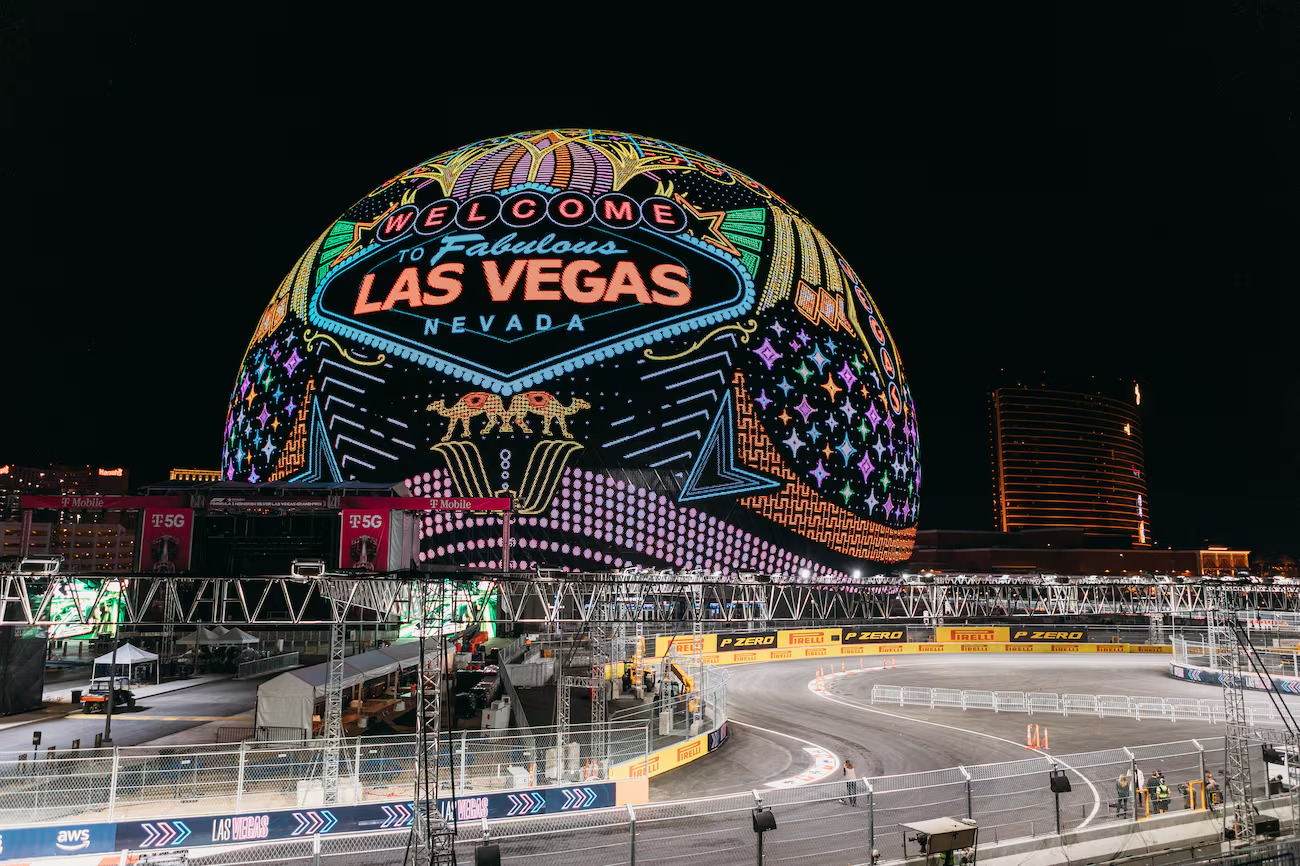Table of Contents
ToggleTop 10 Unknown and Amazing Facts About Las Vegas
As the capital of Clark County and the most populous city in the U.S. state of Nevada, Las Vegas is also referred to as Sin City or just Vegas. The largest metropolitan region in the larger Mojave Desert and the second largest in the Southwestern United States is the Las Vegas Valley. Known for its gambling, shopping, fine dining, entertainment, and nightlife, Las Vegas is a well-known major resort city on a global scale. The majority of its venues are located in downtown Las Vegas, with more being found on the Las Vegas Strip, which is located just outside the city boundaries.

The city is known for its opulent and enormous casino-hotels, and it prides itself on being the Entertainment Capital of the World. As of 2023, Las Vegas has received over 40.8 million visits a year, making it one of the most popular American cities. It is one of the top three places in the United States for corporate conventions and the world’s leader in the hospitality sector, with more AAA Five Diamond hotels than any other city.
In this article, we delve deep into the top 10 unknown and amazing facts about Las Vegas, shedding light on some surprising and lesser-known aspects of Sin City.
1. Gambling Wasn’t Always the Focus of Las Vegas
One of the first things that most people think of when they think of Las Vegas is gambling. Still, the focus of this city wasn’t always on slot machines and casinos. Actually, in 1905, Las Vegas was just a little railroad town. It developed into a rail halt for trains traveling to the Pacific Coast. Far from the neon lights and high-roll lifestyle that we now associate with the metropolis, the early inhabitants were farmers and ranchers.
Gambling was became legal in 1931, after the Great Depression had ended. The pivotal moment came when Nevada legalized casino gambling in an attempt to strengthen its flagging economy. The Northern Club received the first gambling license, which paved the way for Las Vegas to become a paradise for casino owners.
2. Las Vegas’s Neon Lights Can Be Seen From Space
Las Vegas, particularly the Strip, is known as “The Neon Capital of the World” because to its eye-catching display of neon lights. Over 15,000 miles of neon tubing are reportedly in use across the city. These lights have come to represent the city’s character and exude an electric atmosphere of excitement.
The fact that you can see Las Vegas’ brilliant radiance from orbit is even more incredible! The city’s remarkable brightness has frequently been noted by astronauts on board the International Space Station as what sets it apart from the surrounding desolate Mojave Desert.
3. There’s More to Las Vegas Than Just Casinos
Although the city’s economy depends heavily on the casino sector, Las Vegas has much more to offer than just gambling. Indeed, more than 60% of guests visiting Las Vegas in recent years have come primarily for entertainment purposes rather than gambling. The city has positioned itself as one of the best places to see performances, sporting events, and concerts.
Renowned performers like Celine Dion, Britney Spears, Elton John, and others have residencies in Las Vegas. Bringing in crowds from all around the world, the Cirque du Soleil performances are another top draw. Not to mention that, thanks to the NFL’s Las Vegas Raiders and the NHL’s Vegas Golden Knights, Las Vegas has emerged as a major sports destination.
4. The Bellagio’s Fountain Cost a Fortune
The Fountain at Bellagio is one of the most recognizable sights on the Las Vegas Strip. Audiences are enthralled by this magnificent water display’s coordinated performances set to music. However, did you know that a significant sum of money was needed to build the Bellagio Fountain? Building the project came at a staggering $40 million expense.
Water is shot up to 460 feet in the air by the 8.5-acre Bellagio Fountain. It can produce stunning displays thanks to its 4,500 lights and more than 1,200 nozzles. This puts it in the category of not just the priciest but also the most technologically sophisticated water shows worldwide.
5. Technically, the Las Vegas Strip is not in Las Vegas
Many tourists are surprised to learn that the iconic Las Vegas Strip isn’t really inside the city limits of Las Vegas. Rather, it is located in Paradise, an unincorporated part of Clark County.
This has its roots in the 1940s, when the city of Las Vegas annexed land in order to grow. Nonetheless, the majority of the area that would eventually become the Strip was still part of unincorporated Clark County, which freed developers from the city’s harsher rules and higher taxes. Even though the majority of people still identify the Strip with Las Vegas, it is still beyond the official municipal limits today.
6. The Luxor’s Beam of Light is the Brightest on Earth
The Luxor Hotel is one of the most famous buildings in Las Vegas because of its unique pyramid shape. But the Luxor Sky Beam is what really makes it unique. This light beam, which emerges from the summit of the pyramid, is thought to be the brightest on the planet.
The 39 xenon bulbs that power the Luxor Sky Beam cost about $1,200 apiece. On a clear night, the beam may be seen from 275 miles away, and aircraft flying over Los Angeles have even reported seeing it. The Luxor Sky Beam, for all its brightness, has become a staple of the Las Vegas cityscape.

7. Las Vegas Hosts Over 300 Weddings a Day
Being the world’s most popular destination for weddings, Las Vegas has earned the moniker “The Wedding Capital of the World.” In Las Vegas, there are usually more than 300 weddings held each day. Vegas provides a plethora of possibilities for couples seeking a short and unplanned ceremony or an extravagant wedding extravaganza.
Las Vegas is well-known for its unique and enjoyable wedding experiences, which range from Elvis impersonators officiating nuptials to drive-through chapels. Nevada is a popular destination for engaged couples due to its 24-hour accessibility and the ease with which a marriage license may be obtained there.
8. Mobsters Helped Shape Modern Las Vegas
A little-known fact of Las Vegas’ past is the city’s close ties to organized crime. The development of the casino sector in the city was significantly influenced by mobsters in its early stages. Some of the earliest casinos on the Strip were constructed in part thanks to the efforts of well-known individuals like Meyer Lansky and Bugsy Siegel.
One of the first upscale resorts in Las Vegas, the Flamingo Hotel, was built thanks in part to Siegel. His time working on the project was, however, brief because Siegel passed away soon after it opened. Nevertheless, there is no denying that organized crime played a significant role in the development of Las Vegas, and many of the original casino owners were connected to the mafia.
9. The Stratosphere Tower is the Tallest Freestanding Observation Tower in the U.S.
The Stratosphere Tower is the highest freestanding observation tower in the United States, rising to a height of 1,149 feet. It provides guests with breathtaking sweeping views of the surrounding desert and the skyline of Las Vegas. Some of the city’s most exhilarating attractions may also be found in the Stratosphere, such as SkyJump, which allows daring people to bungee leap from the top of the tower.
Because of its height, the Stratosphere is one of the most recognizable buildings in Las Vegas and a must-see for thrill-seekers.
10. Las Vegas Was Home to Atomic Tourism
The connection between Las Vegas and atomic testing is arguably one of the most peculiar episodes in the city’s history. The Nevada Test Site, which is about 65 miles from Las Vegas, was the site of atomic bomb tests carried out by the US government in the 1950s. Tourists found these experiments to be an odd attraction, congregating at hotels and rooftop bars to observe the mushroom clouds up close.
In what is known as “atomic tourism,” guests may even buy “atomic cocktails” and partake in themed events while watching nuclear detonations in the middle of the desert. Even though this bizarre time in Las Vegas history was short-lived, it is nevertheless an interesting and little-known aspect of the city.


